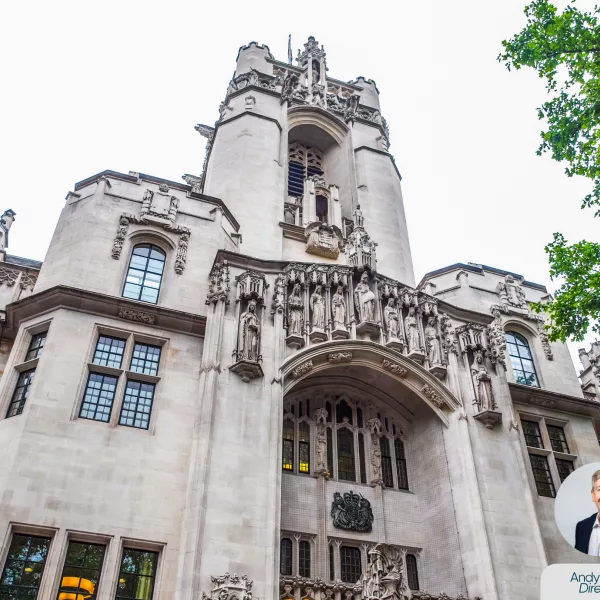
Planning's Role in the Future of Our High Streets
High streets have historically embodied the heart of communities across the country, a place for local commerce and a place for social connection. They have evolved throughout history, but in recent years we have seen a period of accelerated change, with the growth in online shopping, increased remote working and rising costs leading to growing uncertainty in a particularly tough climate. A new report from the House of Lords Built Environment Committee emphasises what many are beginning to realise, that variety is the key to recovery of our local high streets. Retail should perhaps no longer dominate the landscape, the long-term resilience lies in ensuring there is a greater diversity of services to weather the changes in consumer trends over time (1). It is important to take a broader view of a town’s landscape as well, strategic planning of the outer areas of the town are as integral to a flourishing centre as they ever were.
High street retailers have had a particularly difficult time in recent years with factors such as the growth of e-commerce and out of town retail centres impacting their footfall. It doesn’t go unnoticed the mass of empty units across the country, over 13,000 retail stores closed in 2024, an increase of over a quarter on the previous year, and 2025 is expected to be even tougher with the implications of the Autumn Budget (2). The Built Environment Committee report emphasised the need to put less reliance on retail and provide a greater variety through increased leisure facilities, public services and green spaces in order to draw in the footfall of the community (1). Society no longer visits their local high street purely for a commodity purpose, they increasingly visit for an experience, opting to spend more of their income on creating memories (3), hence leisure and hospitality are going to play a critical role in the future of high streets. The generations of Millennials and Gen-Z are a driving force behind this trend, they prioritise their spending on memorable experiences. Careful consideration of stakeholder engagement will be essential for the rejuvenation of our high streets to ensure they provide for the needs of generations to come.

Planning must play a pivotal role in the rejuvenation of our high streets and their sustainability long term. Local Plans need a new strategic vision for these areas to ensure vitality and growth. However, as only 21% of LPAs have adopted a new Local Plan within the last 5 years (1), there is a lot more work to do on the road to high street recovery. The introduction of Class E in the planning system was a step towards improving adaptability and removing barriers to flexible use, ensuring businesses can easily occupy spaces that were previously restricted. This does ensure the high street can be more responsive to changing trends, however, long-term resilience requires more strategic future planning of the whole area. Using facilities such as new leisure, healthcare, education and key services to relocate to more central sites enhances the mix of uses, increases footfall and the overall townscape. Combine this with increases in the residential population, using the space above our centres, and a new dynamic is created, increasing diversity and density to achieve more vibrant and self sustaining places.

A well-designed town centre should be forward thinking and flexible to adapt to the future evolution of the high streets. Union4 have helped deliver several schemes where this has been at the forefront of these changes. The rejuvenation of Tamworth town centre focused on celebrating local heritage and enhancing its character to encourage a greater pride of place for the community, while bringing South Staffordshire College to the town centre to drive regeneration and footfall. Increasingly we are seeing services such as healthcare and education relocating to a more central town location as a method of tackling the issues faced as a result of declining retail footfall.
Bringing strategic employment uses into the centres of towns is also key. Redevelopment of former retail car park at Station Street in Portsmouth, to a state of the art sustainable 8,000sqm office building supports the wider regeneration of the town centre. The site lies within the town centre boundary, within walking distance of the mainline station and key retail areas, generating additional footfall of potentially 1,000 people walking to the high street, visiting the food and retail outlets each day. This development also incorporates another important characteristic of town centre improvement, the addition of a new landscaped public square which adds a new dimension to the public realm.
In Bedford and Redhill, new mixed use developments and associated public spaces and infrastructure are bringing new life to the centres, combining mixed retail and leisure provision at ground level, with cinemas, bowling and new residential populations that help activate the space throughout the day and evening and breathe new life into areas that were in need of change. The current high street climate illustrates the importance of diversity, in order to weather the peaks and troughs in demand for different services. The report from The Built Environment Committee shines the light on the requirements necessary to transform and rejuvenate high streets across the country, and the role that developments on the outer boundaries play in this as well. Regeneration opportunities in the centre and surrounding areas that enhance the local character are integral to transforming a whole area and ensuring high streets remain the heart of communities into the future.

Text References:
1. Built Environment Committee, ‘High Streets: Life Beyond Retail?’ (2024) 2. Centre for Retail Research, ‘The Crisis in Retailing: Closures and Job Losses’ (2024) 3. Retail Economics and Squire Patton Boggs, ‘The Retail Experience Economy: The Behavioural Revolution’, (2017)
Other news
See all

Heritage Planning: Insights from Historic England’s Latest Updates
Heritage planning is constantly changing, with legal precedent, new policies, updated advice, and a growing emphasis on balancing historic character…...
Read now
Court Ruling Mandates Early Publication of Planning Obligations
Recent High Court judgements have found that legal agreements made under the Town and Country Planning Act 1990 (which accompany a planning…...
Read now